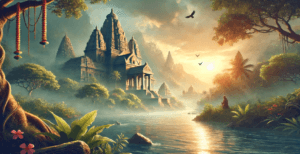The Spiritual Awakening of Young Indians: Blending Tradition with Modernity
Young Indians are increasingly embracing spirituality, blending ancient traditions with modern adaptations. The 2025 Kumbh Mela saw a surge in Hindu sect initiations, highlighting Hinduism’s cultural and political prominence. Prime Minister Modi’s government supports traditional festivals and is exploring political representation for akhara leaders. Social media spiritual influencers, like Jaya Kishori and child saint Abhinav Arora, are reshaping spiritual discourse, making it more accessible to the youth. Digital platforms have shifted influence from conventional gurus to relatable figures, while practices like yoga, meditation, and mindfulness have become integral to daily life.
Organizations like the Isha Foundation promote spirituality as a science, expanding India’s spiritual influence globally. The rise of digital spirituality fosters personalized faith, moving beyond organized religious structures, and prompting traditional religious institutions to adapt to modern spiritual trends. However, concerns arise over the authenticity of online spiritual teachings and the potential dilution of traditional values. Additionally, the integration of ancient sects into politics sparks debates on secularism and religion’s role in governance. This evolving spiritual landscape balances ancient wisdom with contemporary lifestyles, redefining faith in India.

The Spiritual Awakening of Young Indians: Blending Tradition with Modernity
In recent years, young Indians have shown a growing interest in spirituality, significantly impacting traditional religions and social structures. This trend blends ancient practices with modern ideas, shaping a new spiritual landscape in India. Let’s break this down into simpler terms.
Revival of Ancient Traditions
One of the most visible signs of this spiritual shift is the revival of ancient Hindu practices and sects. For example, the Kumbh Mela festival in Prayagraj, held in 2025, was a massive event. Over 400 million devotees attended, and more than 10,000 new sadhus (holy men) were initiated into 13 ancient Hindu sects, known as akharas. This highlights Hinduism’s growing cultural and political significance, particularly under Prime Minister Narendra Modi’s government, which actively supports traditional festivals and practices. There is even discussion about granting akhara leaders a formal role in parliament, potentially integrating these ancient groups into modern politics.
Rise of Modern Spiritual Influencers
At the same time, a new wave of young spiritual influencers is gaining popularity. These influencers use social media to connect with people, especially the youth. For instance, Jaya Kishori, a 29-year-old from Kolkata, addresses contemporary issues such as loneliness and friendship through stories of Hindu gods and goddesses, amassing millions of followers online. Similarly, Abhinav Arora, a 10-year-old “child saint” from Delhi, has built a significant Instagram following. Unlike traditional gurus, these influencers are more relatable and seamlessly blend spirituality with everyday life, making spiritual teachings more accessible to young people.
Spirituality in Everyday Life
Young Indians are also incorporating spirituality into their daily routines through practices like yoga, meditation, and mindfulness. Organizations such as the Isha Foundation, led by Sadhguru, are popularizing India’s ancient yogic traditions as a form of spiritual science. This approach appeals to young people who value logic and reason. The foundation has even established a massive meditation center in Tennessee, USA, demonstrating the global appeal of these practices.
Impact on Traditional Religions and Society
This spiritual movement is reshaping traditional religious institutions and social structures. With the rise of digital spirituality, individuals are exploring diverse practices outside organized religion, leading to a more personalized approach to faith. However, this shift also raises concerns. Some fear that traditional values may be diluted or that online spiritual teachings may lack authenticity. Additionally, the increasing political influence of ancient sects could challenge India’s secular framework, sparking debates about the role of religion in governance.
Conclusion
In simple terms, young Indians are embracing spirituality in ways that blend old traditions with modern life. This transformation is reshaping religious and social structures, creating a unique fusion of past and present. While this trend makes spirituality more accessible and relevant to the youth, it also presents challenges, such as preserving traditional values and maintaining a balance between religion and politics. Overall, this spiritual shift is a dynamic and evolving aspect of India’s cultural and social landscape.
You must be logged in to post a comment.